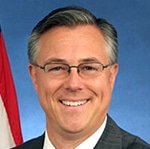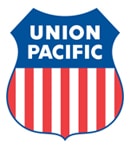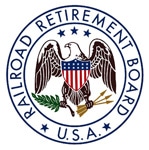
By John Risch,
National Legislative Director –
Thanks to all of you who helped in our Get Out the Vote Campaign. Your generosity with your PAC contributions, emails and direct mail efforts, volunteer phone calling, door knocking, and your conversations with friends and fellow members made a difference in many races. Even where our endorsed candidates didn’t prevail, your efforts were not in vain. Rather, it showed that we were engaged and that we are an organization that supports those that support us.
Clearly the results from Tuesday’s elections were not what many of us had hoped. We lost some good friends like Rep. Nick Rahall (D) in West Virginia and Sen. Mark Pryor in Arkansas (D).
Now our job begins to build relationships with the newly elected members of Congress, whether they are Democrat or Republican. Anthony Simon, our Long Island Rail Road general chairperson, has already reached out to two newly elected Republican congressmen in New York and is setting up introductory meetings.
Special thanks go to Dean Mitchell, our GOTV coordinator, for his hundreds of hours of work on direct mail pieces, robocalls and polling. He worked with our legislative boards to make sure our members were informed as to why we endorsed the candidates we did and helped with early and absentee voting.
Dean also helped with polling and direct mail that made a big difference in the re-election of two good Republican friends, Reps. Chris Gibson and Michael Grimm, both of New York.
Thanks also goes to Phillip Qualy, our Minnesota state legislative director, and his team, that did a phenomenal job of holding back a tough challenge against our friend, Rep. Rick Nolan (D), a member of the House Transportation and Infrastructure Committee.
There is no escaping the reality that the incoming Congress will be less supportive of issues important to our members than the existing Congress. It will be harder to pass a two-person train crew bill and it will be harder to secure adequate funding for Amtrak, transit, essential air service and the National Mediation Board.
This simply means we have to work harder to make our case for all of these things. A first step is for our state legislative directors to meet with the newly elected members and make the case for issues that are important to us.
We don’t have the power to win political elections on our own and this election proved that. What we do have is an obligation to work hard and do the best job that we can for our members. That’s my plan moving forward. With the help of Greg Hynes, our alternate national legislative director, our staff and our state legislative boards, we can protect the interests of our members just as our union has done for more than 100 years.
 Construction of new Amtrak tunnels and several allied projects to New York could cost an estimated $16 billion and under the most optimistic scenario could take up to a decade to build.
Construction of new Amtrak tunnels and several allied projects to New York could cost an estimated $16 billion and under the most optimistic scenario could take up to a decade to build.
 Union Pacific Railroad has boosted hiring plans and aims to add 200 new locomotives next year to improve network congestion, the company said at an investor conference Wednesday in Chicago.
Union Pacific Railroad has boosted hiring plans and aims to add 200 new locomotives next year to improve network congestion, the company said at an investor conference Wednesday in Chicago. During November and December 2014, UnitedHealthcare will hold an open enrollment under Group Policy GA-23111. During this period, any individual who is eligible for coverage under one of the GA-23111 plans can enroll and will be accepted for coverage without any medical underwriting or requirement of good health.
During November and December 2014, UnitedHealthcare will hold an open enrollment under Group Policy GA-23111. During this period, any individual who is eligible for coverage under one of the GA-23111 plans can enroll and will be accepted for coverage without any medical underwriting or requirement of good health.
 Railroad retirement annuitants subject to earnings restrictions can earn more in 2015 without having their benefits reduced as a result of increases in earnings limits indexed to average national wage increases.
Railroad retirement annuitants subject to earnings restrictions can earn more in 2015 without having their benefits reduced as a result of increases in earnings limits indexed to average national wage increases. Three days after an oil train derailed and exploded in 2013 in Lac-Mégantic, Quebec, killing 47 people, Greg Saxton wandered through the disaster site inspecting tank cars.
Three days after an oil train derailed and exploded in 2013 in Lac-Mégantic, Quebec, killing 47 people, Greg Saxton wandered through the disaster site inspecting tank cars.